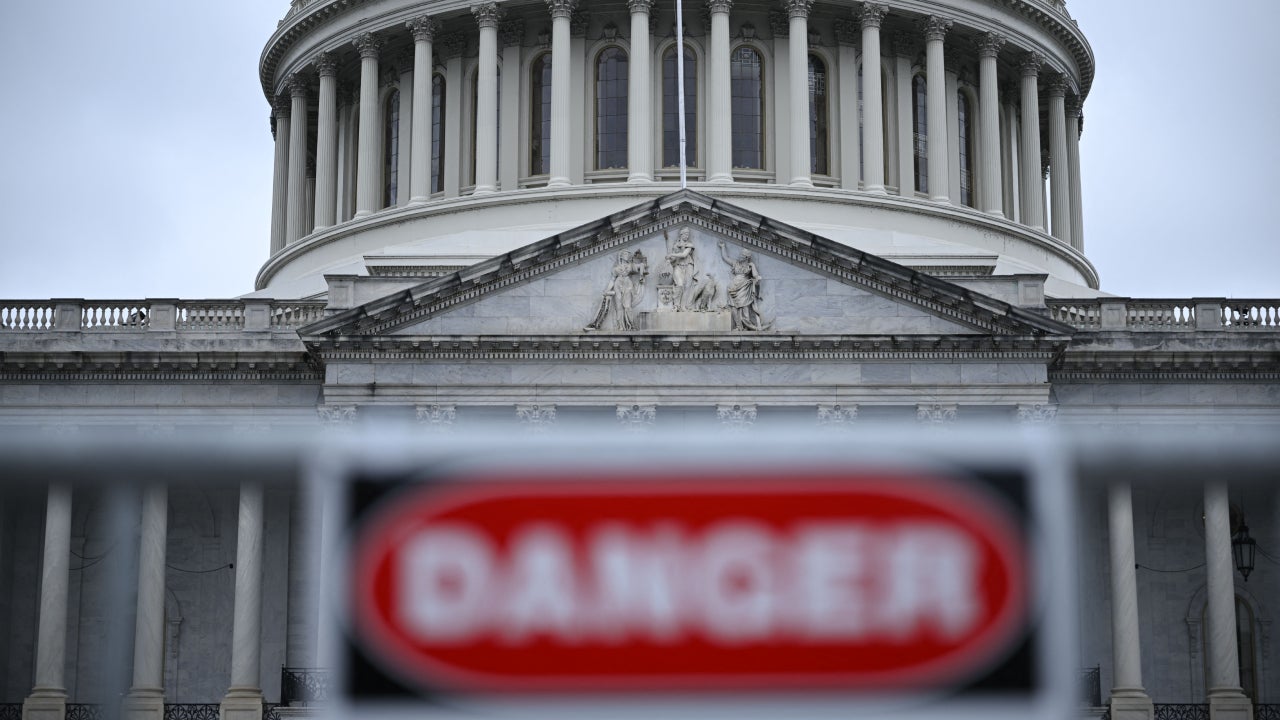How small businesses can financially prepare for another shutdown




COVID-19 cases are once again on the rise as the Delta variant spreads. Increasing case counts have prompted the CDC to issue new guidance about mask-wearing and vaccinations.
With mask recommendations revived, small-business owners might be wondering if another round of shutdowns is on the table.
Eric Trettel is the owner of Sota Bookkeeping, a provider of bookkeeping services for small businesses. He thinks an exact repeat of 2020 is unlikely, but business owners should be paying attention.
“We’re already seeing businesses start to mandate, or at least recommend, that employees and/or customers wear a mask regardless of whether they’re vaccinated,” says Trettel. “I think we’ll see that trend continue.”
Nearly 30 percent of U.S. small businesses closed in 2020 as the pandemic’s impact unfolded, according to a joint tracking project by Harvard and Brown Universities. While some closed temporarily due to COVID-19 shutdowns, others may have shuttered permanently due to financial strain.
The federal CARES Act offered relief in the form of the Paycheck Protection Program, to the tune of over $792 billion in funding. But with many businesses still struggling, having a contingency plan could make future shutdowns easier to cope with.
“It’s imperative that business owners plan for it now,” says John Millen, managing partner at employee benefits advisory firm MillenGroup.
Millen says some of the biggest impacts from a Delta variant-driven shutdown could include cash flow disruptions resulting from delayed payments, decreased employee productivity due to COVID-related absences and customers cutting back on spending.
If you run a small- or medium-sized business, it pays to know what may lie ahead and how to prepare.
How small businesses were impacted by previous shutdowns
According to the Small Business Administration (SBA) Office of Advocacy, there were approximately 31 million small businesses in operation in 2019. Assuming the 30 percent closure rate estimated by the Harvard/Brown project, that means about 9.3 million businesses were shut down at some point in 2020.
And the pandemic hit some industries harder than others. The industries that took the biggest hit because of the pandemic, according to the SBA, include:
- Accommodation and food services
- Educational services
- Arts, entertainment and recreation
- Health care
While some small businesses recovered, others did not. A May 2021 Federal Reserve report found 35 percent of service-based businesses that closed during the pandemic were still closed. The report also estimated that just 3 percent are likely to reopen.
With the shutdown gauntlet thrown, small businesses have been challenged to find new ways to meet their customers’ needs in the age of social distancing and mask-wearing. For Alexa Allemano, owner of Foamy Wader, that meant reimagining her business model.
In March of 2020, stay-at-home orders led Allemano to close the storefront of her Whidbey Island-based jewelry boutique. She shifted her focus to selling online and improving her business website, eventually reopening in a new space in October 2020 on an appointment-only basis. Allemano set up window displays at her physical store with QR codes to create a virtual window-shopping experience. This helped drive traffic to her online store and as a result, revenues have once again returned to pre-pandemic levels.
While Allemano said she’s concerned about how another shutdown may impact the local community and broader economy, she’s not fearful of what it could mean for her business.
“Personally, I’m not too worried for my individual business should another shutdown occur,” she explained. “We’ve been working toward shifting to better meet the changing needs of our retail customers and e-commerce, and feel confident in those enhancements.”
Restaurant industry professionals had to display similar creativity as shutdowns put a halt to in-person dining. Some of the ways restaurants coped include offering curbside take-out, expanding delivery and turning to digital solutions to manage increased demand for orders. New seating arrangements, plexiglass dividers and a switch to QR code-based menus have helped to keep employees and patrons safe as restaurants reopen. Grocery stores and big-chain retailers like Walmart have become pandemic-friendly as well by expanding online ordering, pickup and contactless delivery.
Navigating shutdowns and stay-at-home orders also meant that small-business owners had to rethink the way they approached cost management, as James Trumbly, owner and founder of Austin-based web design agency HMG Creative, learned.
Shutting down in 2020 meant a shift from having employees working on-site to at home, which left his business’s office space empty. That was less than ideal, as the business still had to pay rent and utility costs throughout the shutdown. And there was a concern that clients might opt to scale back on projects to save money. Trumbly found a solution that made it possible to stay profitable through the pandemic.
“We were able to mitigate office rental costs by subleasing to another small company,” he says. “Once we were all back in the office, the shared rent cost helped to offset the costs of needing to pay rent when the office was empty during lockdown.”
Trumbly was also fortunate that his clients opted to continue with the work they’d contracted. Clients were invested enough in the outcome to assume any financial risk that might be attached to the pandemic. But this example underscores the need for building strong relationships so something like a shutdown doesn’t decimate your customer base.
So what does it all mean for small-business owners worried about the Delta variant wreaking havoc? Like the first go-around, innovation and adaptability can be vital to weathering the shutdown.
What small businesses can do now to plan for future shutdowns
While there’s no way to predict another shutdown with certainty, small business owners shouldn’t wait until one is looming to plan. For example, Millen said business owners should consider ramping up their marketing efforts now.
“This is counter-intuitive, but now would be the time to get attention to drive new customer revenue,” he says.
Millen also suggests offering a discount to encourage customers to prepay if that’s a solution that works for your business model. This can help with improving and stabilizing cash flow.
You might consider researching grants, loans and other small business relief options just in case you need them in the event of a shutdown. While Paycheck Protection Program loans are no longer available, the SBA is still offering Economic Injury Disaster Loans (EIDL) to eligible businesses. The SBA is also still authorizing debt relief for existing borrowers who have been impacted by COVID-19.
Small business help may also be available at the state or municipal level. New York’s Business Pandemic Recovery Initiative, for example, includes grant funding, loans and tax breaks for small businesses that were affected by closures. Your state’s economic or business development office may be able to help with finding out what options are available.
Cutting costs and shoring up cash reserves could help your business to stay in the black if a shutdown happens because of Delta or another variant. If you don’t have a business savings account, you may consider opening one and automating deposits. This could be your “just in case” money in the face of a shutdown or another emergency that threatens your bottom line.
Trettel says business owners may want to reconsider any big capital improvements until there’s more certainty on the economic front. In the meantime, you may want to review your day-to-day spending to look for expenses you can eliminate from your budget.
Finally, consider the possibility of opening a business credit card or a small business line of credit as a preemptive measure. Having a line of credit available could help with covering expenses in a pinch if a shutdown happens. Business credit cards could also save your business money if you’re earning cash back that you could apply as a statement credit or points and miles for travel.
“I wouldn’t suggest applying for a loan until the funds are actually needed, but it would be a good idea to contact your banker and apply for a line of credit,” says Trettel. “Even if you never plan on using it, it’s nice to have access to those funds if the time comes.”
You may also like

How to finance a small business for the holidays

What is Small Business Saturday?


